 NEEDLE OR PENCIL? Children from Sarlahi work as jari embroiders in Thankot. |
"It's difficult especially in winter but I have been working since I was six," he tells a visitor matter-of-factly, and with a swagger mature for his age. Then he goes back to mopping the restaurant floor.
There are an estimated 1.5 million Nepali child workers like Bikash between 5-17 years. Even though the minimum legal age of employment in Nepal is 14, children as young as six can be seen working in roadside restaurants, factories, offices, and even in homes.
"Poverty and lack of opportunities are driving many families to use children as safety nets and sending them out to earn without caring about the physical and psychological dangers involved," says Helen Sherpa of World Education, which has been working on educational projects to combat child labour in Nepal.
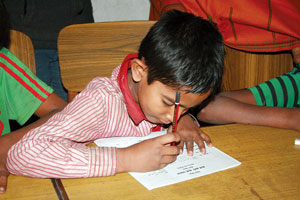 PICS: H SHERPA/WORLD EDUCATION The boy (pictured above, on the right) now attends non-formal education classes in Naradevi, but is holding his pencil like he would hold a jari needle. |
Embroidery factories that make jari fabric, dance bars, massage parlours and cabin restaurants have become new hotspots for the exploitation and abuse of child workers in Nepal.
"Eleven to twelve year old girls are working in dance bars and restaurants," says Pramesh Pradhan of Change Nepal, which works with women and children in the 'entertainment business'. "These days Nepali girls are smuggled not just to India but also within the country. There has been a surge of young girls forced into commercial sex work."
After the clampdown on jari factories in India, many young Indian boys and girls have been found in fabric factories across Nepal. Children as young as five are forced to work up to 14 hours a day because they are docile and have nimble fingers.
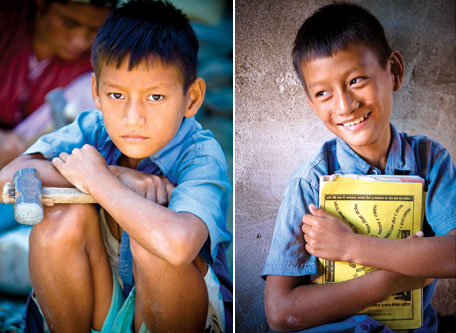 RIGHT TOOLS: A child miner in Dhading is now enrolled in a school. |
However, child rights activists believe that legislation alone will not be enough, there has to be job opportunities for adults so the children don't have to work. Says Madhav Pradhan of Child Workers in Nepal (CWIN), a children's organisation that runs a free helpline and carries rescues children from risky working environments: "Protecting former child labourers is important and so is making sure parents are earning enough so that they don't make their children work, all this takes time."
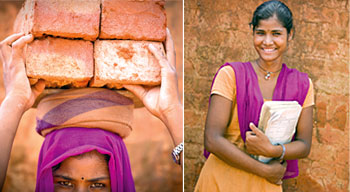 PICS: DAVID DUCHEMIN/WORLD EDUCATION HEAVY LOAD: A former worker at a brick kiln in Sunsari has resumed her studies. |
Unfortuantely for hundreds of thousands of children like Bikash, time has passed them by, and they will never enjoy childhood.
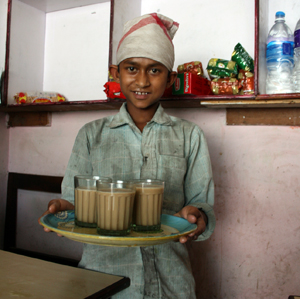 PASANG Y SHERPA Teashop worker in Kathmandu. |
 DAVID DUCHEMIN Waiting for customer. |
 DAVID DUCHEMIN One of the many children involved in urban transport in Kathmandu. |
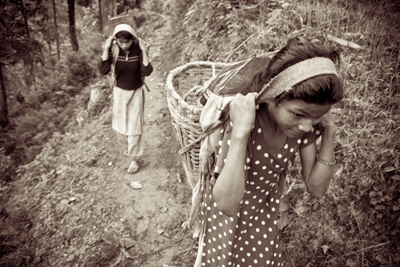 DAVID DUCHEMIN Girl child porters carry rock slate. |
Visit World Education's Nepal page
Read also:Lost innocence
Bonded child labourer to CA member
Caution: children at work
See also:
Mind the children, INDU NEPAL
Helping child labourers looks harder than it actually is
Kathmandu kids, MICHAEL F WILLIAMS
Fighting to offer children a brighter future


